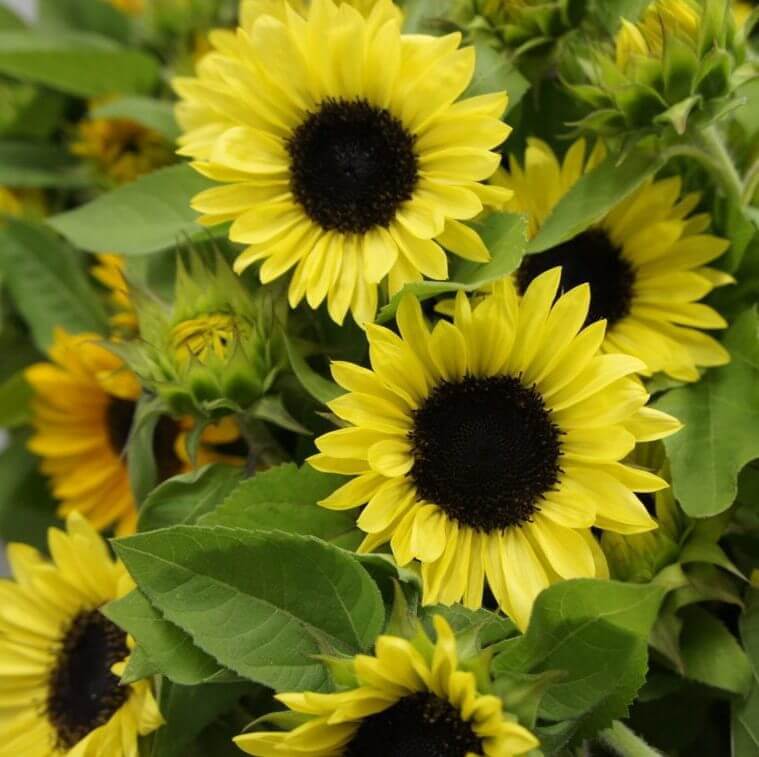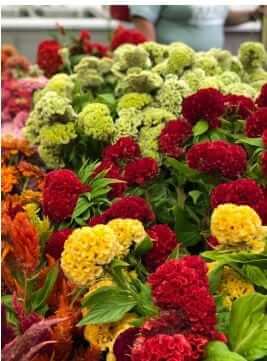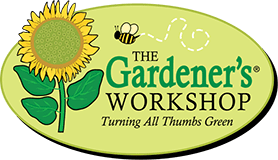Making The Most of Your Cut Flowers
 Making Your Cut Flowers Last Longer
Making Your Cut Flowers Last Longer
Lisa Mason Ziegler
Products mentioned in article: Pre-treatment CVBN Tabs and Fresh Cut-Flower Food
My years of growing and selling flowers to florist, supermarket, and consumer have taught me much about the life of a cut flower. I am sharing here what I’ve learned in the hopes of helping you make your cut flowers last longer.
 Homegrown vs imported flowers: Flowers harvested from a home garden last longer than their counterparts, the imported flower. 80% of flowers sold in the USA ($7 billion annually) are imports and most are grown in South America. These flowers go through what I call the “retail cycle” before they land in your florist shop or supermarket.
Homegrown vs imported flowers: Flowers harvested from a home garden last longer than their counterparts, the imported flower. 80% of flowers sold in the USA ($7 billion annually) are imports and most are grown in South America. These flowers go through what I call the “retail cycle” before they land in your florist shop or supermarket.
This retail cycle is what it takes to get the flowers from where they are grown to your tabletop. These imported flowers are well over a week old when they finally reach you and they have been out of water a good deal of that time. They have practically exhausted their vase life before they even get to a vase!
Flowers grown in your garden or on a local flower farm naturally have a longer vase life by avoiding the long trip to the table. Grow your own or buy from a local flower farmer!
The Steps:
Harvest container: I’ll cut to the chase: if you aren’t willing to drink water out of the harvest container or vase, then don’t put flowers in it. Wash your buckets and containers with dishwashing liquid. Use a little bleach to remove scum build-up if needed.
How often to harvest: To keep a cutting garden producing fresh blooms, it must be harvested on a regular basis. I recommend twice a week. The first time you skip a harvest is the beginning of the decline of a cutting garden.
Time of day to harvest: The best time of day to harvest is either morning or near dusk. Harvesting during the heat of the day is as stressful for flowers as it is for people. I prefer to harvest in the morning as soon as the dew has dried off the blooms.
Stage to harvest: How far the bloom has opened when the stem is harvested makes or breaks how beautiful and how long the stem will last. You cannot make an old flower look good or prevent an immature bloom from drooping. This is why it is necessary to learn what stage to harvest the specific flowers you are growing. Both of my books Vegetables Love Flowers and Cool Flowers tell the stage of harvest for many flowers.
 Stage to harvest examples: Zinnias and cockscomb should be all the way open at harvest; once cut, they will not open any further. On the other hand, sunflowers and snapdragons are harvested when they are just starting to crack open. This prevents any pollination that may shorten vase life. It also prevents pest damage to those delicate petals. Both continue to open indoors safe from hot sun, wind and pest damage. Knowing when to harvest a stem is a big part of a long vase life and clean, damage-free blooms.
Stage to harvest examples: Zinnias and cockscomb should be all the way open at harvest; once cut, they will not open any further. On the other hand, sunflowers and snapdragons are harvested when they are just starting to crack open. This prevents any pollination that may shorten vase life. It also prevents pest damage to those delicate petals. Both continue to open indoors safe from hot sun, wind and pest damage. Knowing when to harvest a stem is a big part of a long vase life and clean, damage-free blooms.
Removing foliage: Leaving too much foliage on a cut stem shortens vase life and causes stress on the stem’s ability to hydrate. The stem simply cannot drink enough to keep all that foliage alive. On most stems I leave the foliage along the top 4-6 inches of the stem. Foliage that falls below that line is stripped in the garden as the flowers are harvested.
After the harvest: Flower stems must be conditioned after harvesting to delay bacteria growth and to provide nourishment. These steps will extend vase life as long as possible. There are two recommended steps: pre-treatment in the harvest container followed with food in the vase.
- Pre-treatment: The harvest container gets a CVBN Tab. This chlorine-based tablet kills bacteria that is a result of the stems dumping debris into the water. This debris immediately begins the cycle of bacteria growth. Some flowers are known to dump more debris than others and are more sensitive to the polluted water. We call this group of flowers the dirty dozen. At the top of the dirty dozen list are zinnias, marigolds, sunflowers, daffodils, and dahlias. Pre-treating gives extra days of life in a vase. The flowers are treated for at least 4 hours and can sit in this treatment for up to 3 days. I treat all flowers whether or not they show up on the Dirty Dozen List.
- Fresh Cut-Flower Food is what goes in the vase following the pre-treatment in the harvest container. Homegrown flowers drink lots of water and benefit from having food to live longer and look better. Flower food provides: nutrition to keep flowers colored up and to continue opening, a biocide to help prevent bacteria from developing, and a ph balancer that helps to prevent air bubbles that result in clogged stems.
 Busting the myth about cut-flower food: Flower food does make a difference. If you have used fresh cut-flower food on store-bought flowers with no visible results, chances are good that the stems were clogged from the long retail cycle they traveled. When stems are clogged, they cannot drink and get the benefit of the food. Flower varieties found in supermarkets and florists are chosen by importers because those flowers can survive the retail cycle without water for many days. This characteristic prevents us from realizing that the clogged stems are not able to drink. Fresh flower food makes a big difference in stems from homegrown and local flower farms because they are able to drink the solution and stay fresh longer.
Busting the myth about cut-flower food: Flower food does make a difference. If you have used fresh cut-flower food on store-bought flowers with no visible results, chances are good that the stems were clogged from the long retail cycle they traveled. When stems are clogged, they cannot drink and get the benefit of the food. Flower varieties found in supermarkets and florists are chosen by importers because those flowers can survive the retail cycle without water for many days. This characteristic prevents us from realizing that the clogged stems are not able to drink. Fresh flower food makes a big difference in stems from homegrown and local flower farms because they are able to drink the solution and stay fresh longer.
- Care in the vase: Always use conditioning products according to directions. If you are not measuring the water volume to the recommended amount on the products instructions, it cannot work properly. After a few days, gather the bouquet in your hand and lift out of vase. Rinse the vase, refill with clean water and food, trim 1-2” off the bouquet stems, remove any old blooms, spray the ends of the stems off with water if needed, and replace bouquet in the vase.
My favorite harvesting shears, pre-treatment, and flower food are all available on my website.
Happy harvesting!
Lisa Z
Lisa Mason Ziegler is a commercial cut-flower farmer in Newport News, Virginia. Founder of The Gardener’s Workshop and Flower Farming School Online. Author of Vegetables Love Flowers, Cool Flowers, and The Easy Cut-Flower Garden
